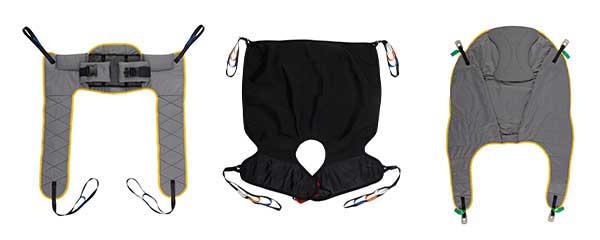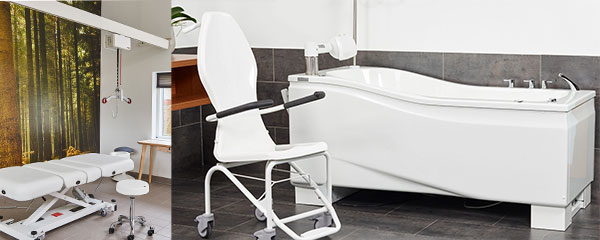5 Signs Your Assisted Bath Needs Replacing
10 Minute Read
If your assisted bath is making things more stressful than calming for residents and care staff, it might be time to look at replacing it.
Care homes are busy places and everyone has a lot of responsibility. It’s easy for equipment to be left to deteriorate. Therefore, you may work reactively to repair it every time it breaks, instead of working proactively to replace it before you spend any more money or time on it.
We’ve heard it so many times “If you can fix it, I will not replace it yet. We’ll run it into the ground.”
If left for too long, your ageing equipment can end up costing you more than you thought in both equipment downtime and repair costs.
But how do you know when to replace your assisted bathing equipment rather than repair it? What issues are big enough to justify the time and expense?
1. Poor Condition
In many care homes, staff and users can use assisted bathing equipment multiple times per day, seven days a week. They are essential in maintaining self-esteem and quality of life for your service users. However, with all this use, bathing equipment can degrade.
Common damage to baths includes scratches to the resin inside the bathtub. Whilst it might not seem an issue at the start, if left unfixed, it will eventually develop into chips which can cause many health and safety issues for users, such as causing lesions to their skin. Bathtub damage also causes an infection control risk, as bacteria can gather in the cracks and chips, making it difficult for staff to disinfect and clean the tub.
Assisted bathing equipment can also suffer from cracks and leaks in the plumbing components, which, if undetected, can lead to bigger issues within the bathroom, such as low water pressure and even localised flooding.
The poorer condition your assisted bath is in, the more likely it is to need repairs and maintenance to keep it in good working order. This work can cost more over time than the bath. This is when it’s time to consider replacing your bathing equipment.
2. Age of Equipment
Assisted bathing equipment is robust and long-lasting but even the most robust equipment has a lifespan. Manufacturers of bathing equipment will sometimes provide the expected lifespan in their user manuals.
However, there are so many variables to consider when applying this to your equipment. Such as
- What environment is it used in?
- How much use does it get?
- How often is it maintained and inspected?
- How often is it repaired?
- What condition is it in?
The expected lifespan of specialist bathing equipment can range from 7 years with heavy use, to 15 years with little use.

Another factor to remember is the older your assisted bath becomes, the more likely it is for manufacturers to announce its discontinuation and eventually declare it obsolete. This means that spare parts will no longer be available, which makes it harder to service and maintain.
Read more: What to do when your patient handling equipment becomes discontinued or obsolete
If your assisted bathing equipment is approaching, or over 10 years old, now might be the time to consider replacing it.
Medaco can work with you to audit the condition of your current bathing equipment, assess the availability of spare parts, how much you’ve spent on repairs and therefore whether it is worth replacing.
3. Usage of the Equipment
As mentioned earlier in this article, the greater usage a bath receives, the more wear and tear it will receive and the quicker it will degrade and therefore need replacing.
However, the frequency of its use is not the only contributing factor to when you need to replace your specialist equipment; the way it’s used is also a factor. Assisted baths are specialist pieces of kit and have many features to use. Not every member of staff will have specific training on each piece of equipment, especially in care homes with high staff turnover.
This means staff can misuse bathing equipment because of a lack of user knowledge and training. Features such as an integrated bath hoist, the control buttons or shower gantry can deteriorate quickly if they aren’t being used correctly.
4. Frequency of Faults and Cost to Repair
During its use, your care equipment may stop working and will need to be repaired. Sometimes this happens during the warranty period, but more often than not it occurs outside of the warranty, as the equipment gets older.
Spare parts such as handsets, batteries and operational controls are common components that are replaced on bathing equipment. These aren’t expensive parts and shouldn’t affect your repair costs too much unless they are being replaced an unusual amount of time within a short period.
However, when high-priced and more complex components fail, such as the control box, actuator or water temperature valve, this is when the costs can escalate. This needs to be managed carefully so that you’re not spending large amounts of money on aged bathing equipment that will keep having issues as time goes on. There will come a point when the bath becomes uneconomical to repair, and this is when you should replace it.
There is no magic formula but Medaco has provided some guidance on how to decide to repair or replace care equipment.
5. Requirements Have Changed
Many care homes, no matter their size, will usually have one or a few assisted bathrooms which need to accommodate specific service users. Throughout their time, care operators will provide care to users with different needs and must adapt their care equipment to cater to this. What might have been suitable for your service users 10 years ago may not be anymore, especially with the rise of people with dementia moving into care homes.
If the requirements have changed and it’s time to replace your bathing equipment, then you may look to upgrade rather than replace a like-for-like. There are many assisted baths available, with varying features and benefits for both your service users and your care staff.
The Hi-Lo baths provide a safer working environment for your staff and users. They can lower the bath to the level required for a safe transfer of the service user into the bath. Then the height increased to a position that is comfortable and safe for the care staff to provide personal care, without the need to bend over the bath.
Is it Time you Replaced your Assisted Bathing Equipment?
Assisted bathing equipment is robust and can last a long time if used correctly and looked after by your care staff, as well as regularly serviced and maintained. However, no equipment will last forever and there will come a time when you need to replace your specialist bath. Hopefully, this article gave you some signs to look out for.
If you see any of these signs, it’s time to consider an assisted bath replacement so you can bring improved safety and comfort to your bathing area to give your service users the care they need.
Equipment Audit and Proactive Asset Management to Predict Future Needs:
Medaco can provide an asset audit of your equipment to check its age, status and condition. If Medaco currently services your bathing equipment, we can also provide data on your current spending on remedial work.
Not only is this useful for older equipment, but performing this on all assets will ensure you have the data you need to make informed decisions year on year and ahead of time.
It’s important to note that if mobile hoists. etc were to fail. You can replace them within a few days. However, this is not the same with installed equipment such as assisted baths and ceiling track hoists. With the current challenges of manufacturers struggling to meet the demands of the industry, lead times on an assisted bath could be near 2-3 months.
Bathing Equipment over 10 Years old
Therefore, you need to be made aware ahead of time so that you can replace your assisted baths before they fail, so you don’t end up without a working bath for this time.
Equipment audits allow you to forecast when you might need to consider replacing equipment so that you can budget for it ahead of time and avoid any costly delays when your equipment is down.
If you are interested in an equipment audit and proactive asset management, get in touch with our friendly team, who would be happy to help.
You ask – We answer
This blog is from a new series focusing on ‘You ask – We answer’ where we aim to answer the hard-hitting questions our customers are asking. If you have a burning question you would like answered, just type it in the box below.
Interested in more articles like this? Sign up below to get notifications of new articles published.
If email isn’t your thing, follow us on our social channels for all the latest updates from Medaco.







